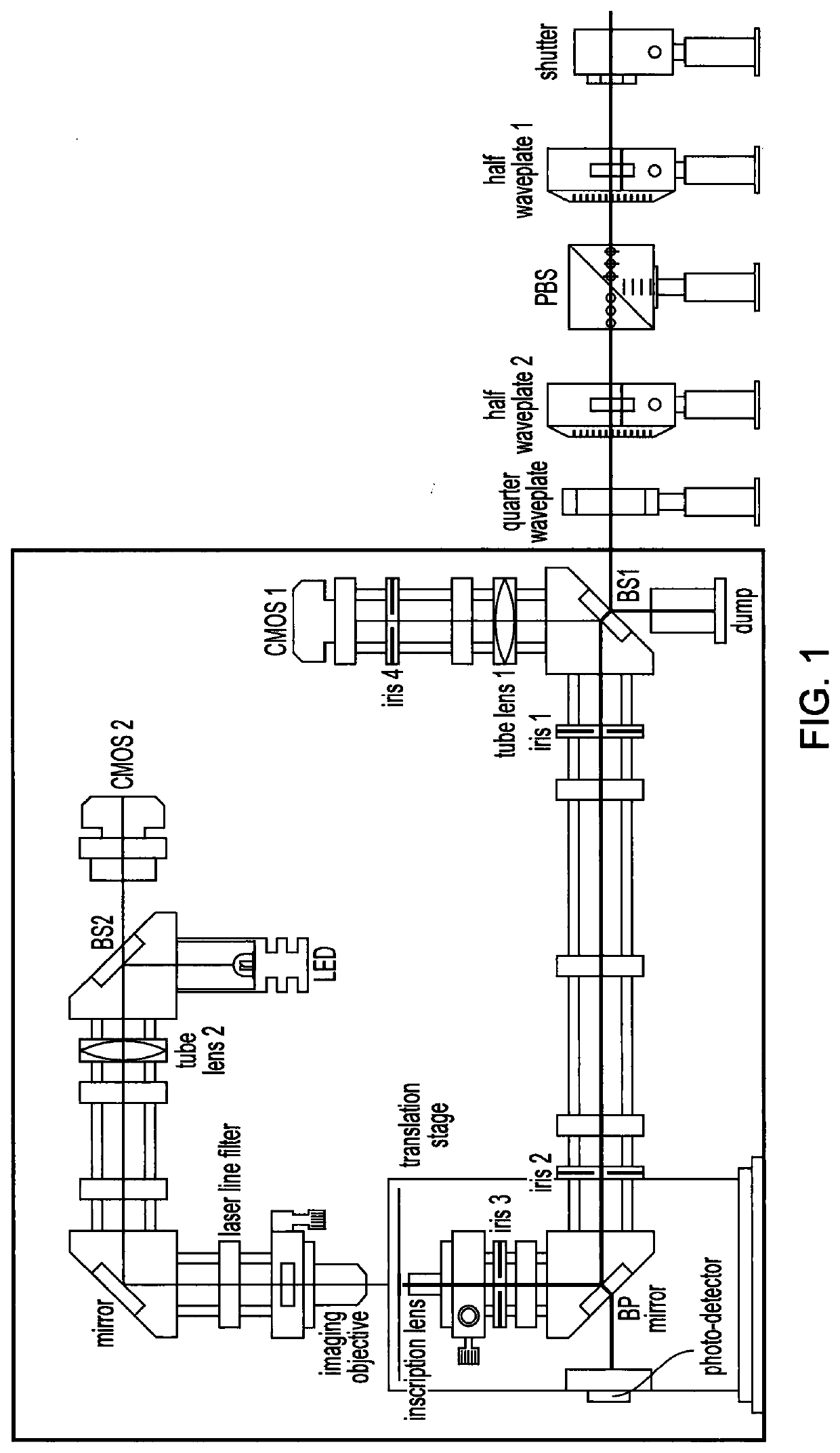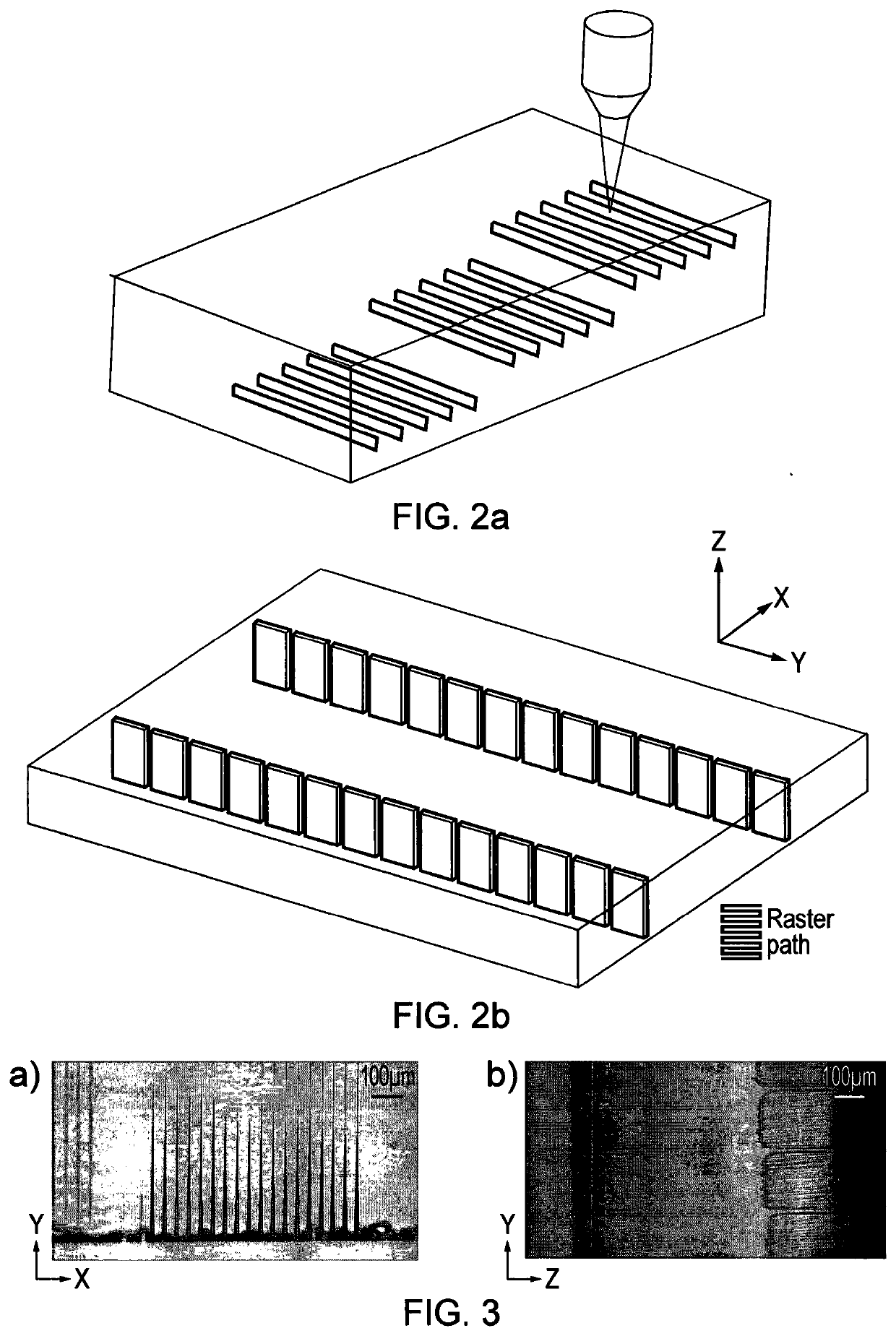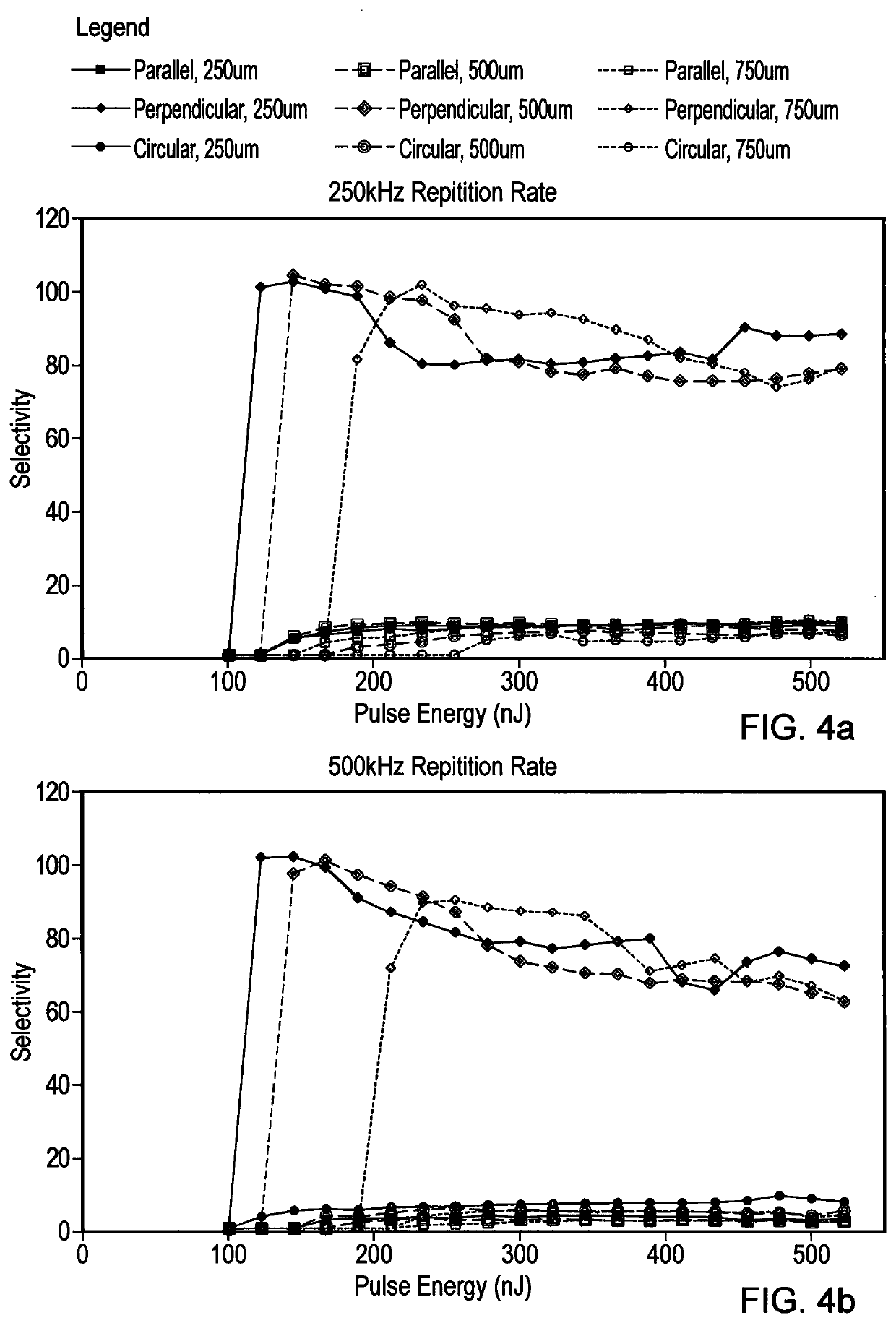Direct laser writing and chemical etching and optical devices
- Summary
- Abstract
- Description
- Claims
- Application Information
AI Technical Summary
Benefits of technology
Problems solved by technology
Method used
Image
Examples
Embodiment Construction
[0067]Selective Etching
[0068]When submerged in a hydrofluoric acid (HF) solution, fused silica will dissolve to form first silicon fluoride and then hydrofluorosilicic acid following the chemical reaction18:
SiO2+6HF→H2SiF6+2H2O.
[0069]The etch-rate of fused silica depends on the molecular chemistry between the glass and the etchant, as well as external factors such as the temperature. For selective etching, an aqueous solution containing between 1 and 40% acid is commonly used and etching times can vary from a few minutes to several hours. Unmodified, or pristine fused silica has an etch-rate of approximately 0.05 μm / min when submerged in a 5% HF solution. Modified Types I, II and III have each been shown to facilitate an increased etch-rate19, and for certain inscription parameters, an increase of up to two orders of magnitude can be achieved20. The mechanisms that contribute to the increase in etch-rate depend on the type of modification present. For Type I modification, a decrease...
PUM
| Property | Measurement | Unit |
|---|---|---|
| Transparency | aaaaa | aaaaa |
Abstract
Description
Claims
Application Information
 Login to View More
Login to View More - R&D
- Intellectual Property
- Life Sciences
- Materials
- Tech Scout
- Unparalleled Data Quality
- Higher Quality Content
- 60% Fewer Hallucinations
Browse by: Latest US Patents, China's latest patents, Technical Efficacy Thesaurus, Application Domain, Technology Topic, Popular Technical Reports.
© 2025 PatSnap. All rights reserved.Legal|Privacy policy|Modern Slavery Act Transparency Statement|Sitemap|About US| Contact US: help@patsnap.com



